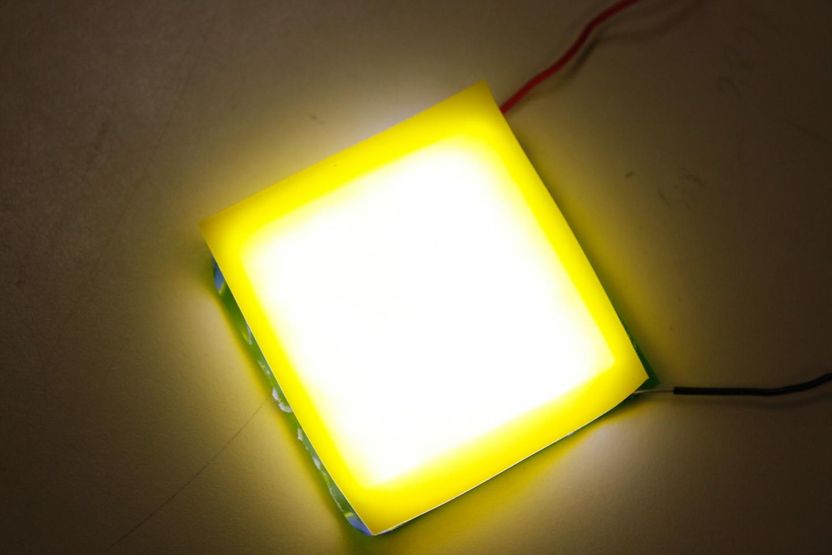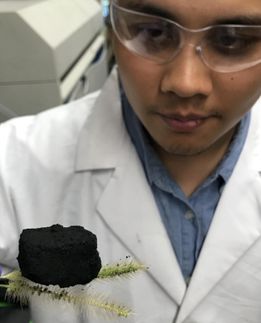A new design for an easily fabricated, flexible and wearable white-light LED
Researchers from National Chiao Tung University, Taiwan have created highly flexible, efficient white LEDs with potential use in wearable displays and non-flat surfaces, such as curved and flexible television screens. While the design itself is new, the LED was completely fabricated from pre-existing technologies, allowing others to easily replicate and build on the platform.

This is a a large area warm white light source with bending capability
Chin-Wei Sher, Chien-chung Lin, Hao-Chung Kuo/National Chiao Tung University
"Compared to organic light-emitting diodes, this design of flexible LEDs can be very attractive, due to the low cost, prolonged lifetime and high efficiency. In addition, all of the technologies associated with this design are currently available," said Chien-Chung Lin, associate professor, College of Photonics, National Chiao Tung University, Taiwan.
This is their first flexible LED device, while their previous work had involved conventional gallium-nitride LEDs.
The researchers' off-the-shelf LED device gets its flexibility from its two primary materials, polyimide and polydimethylsiloxane. To construct it, Lin and his colleagues first covered a polyimide substrate with copper foil shielding tape. In a process known as flip-chip bonding, which reduces thermal resistance and results in higher heat dissipation than traditional wire bonding, they mounted 81 Blue LED chips to the foil in an upside down position.
To provide a warm white-yellow light, the researchers then added another layer consisting of a yellow phosphor film that had been mixed and spin-coated in polydimethylsiloxane (PDMS), a widely used silicone-based organic polymer.
The researchers ran the device for a standard 1,000 hours, finding that its emission decayed by only 5%. Its potential for use in wearables was demonstrated when subjected to bending tests.
Original publication
Other news from the department science

Get the chemical industry in your inbox
By submitting this form you agree that LUMITOS AG will send you the newsletter(s) selected above by email. Your data will not be passed on to third parties. Your data will be stored and processed in accordance with our data protection regulations. LUMITOS may contact you by email for the purpose of advertising or market and opinion surveys. You can revoke your consent at any time without giving reasons to LUMITOS AG, Ernst-Augustin-Str. 2, 12489 Berlin, Germany or by e-mail at revoke@lumitos.com with effect for the future. In addition, each email contains a link to unsubscribe from the corresponding newsletter.


























































